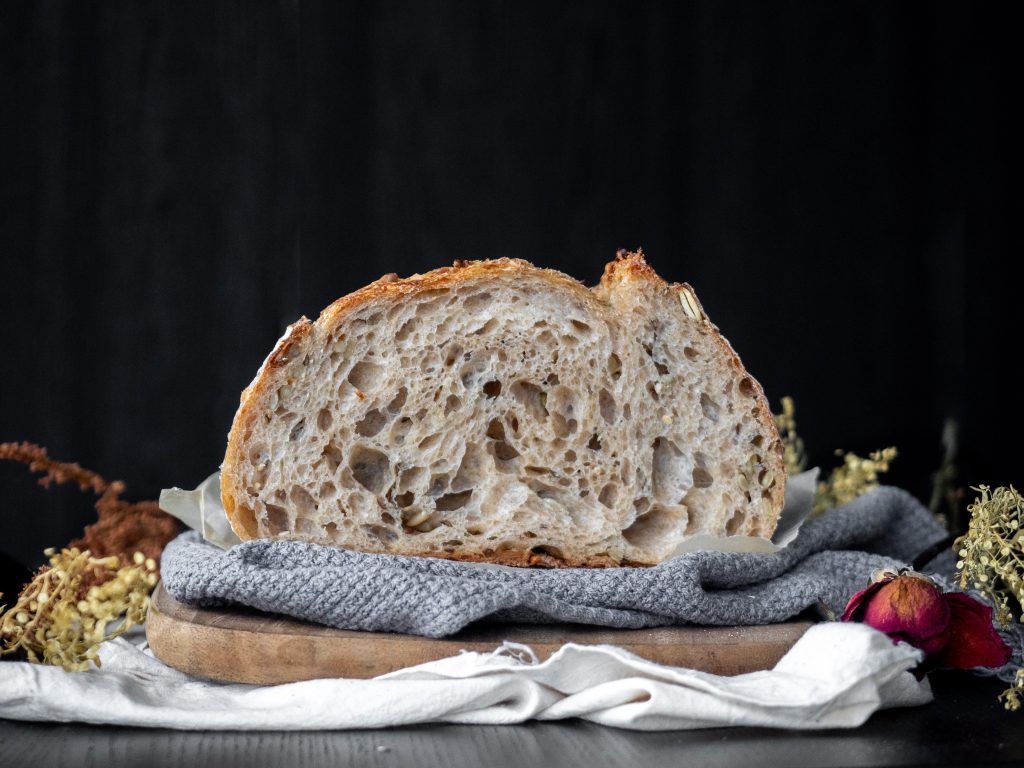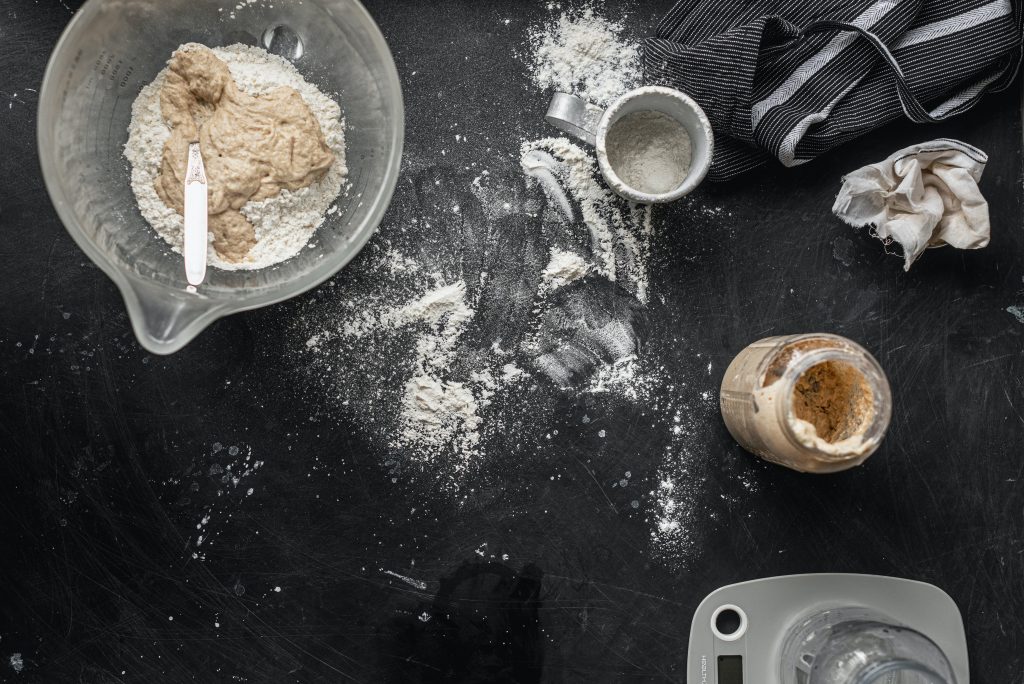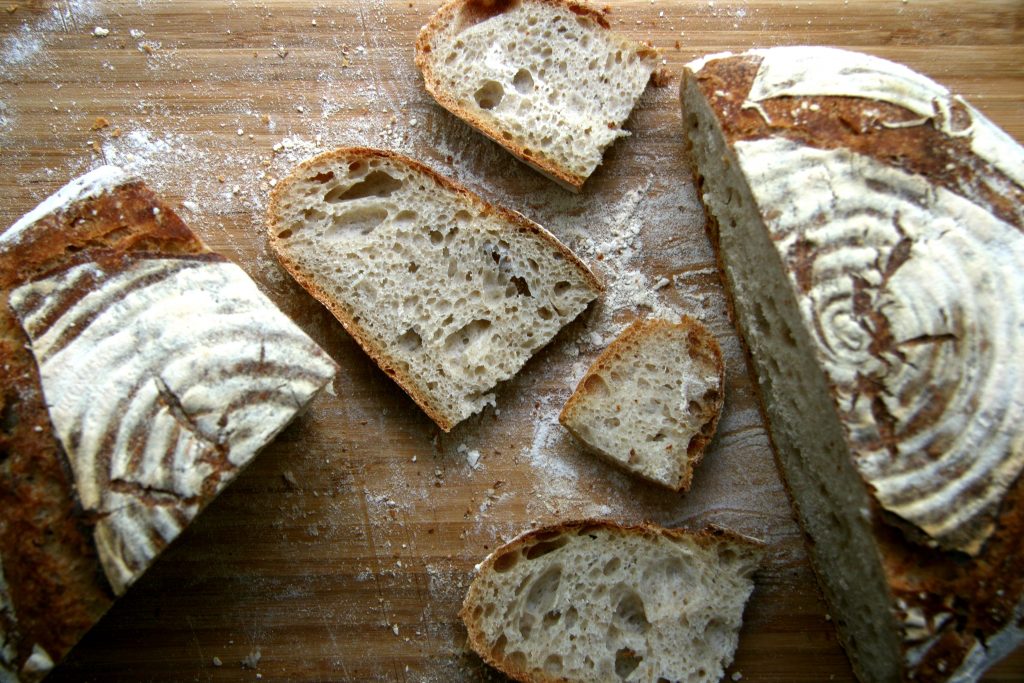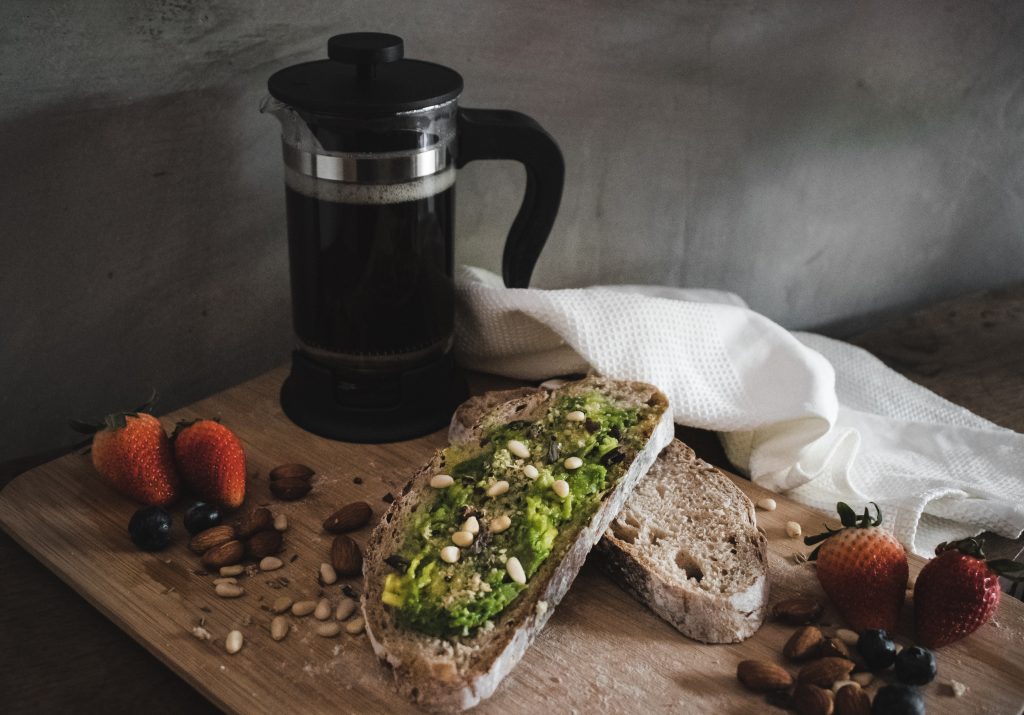
Sourdough has been around long before it’s significant rise to fame in the modern food scene. From the simple loafs in Ancient Greek to the bustling bakeries of San Francisco, the story of sourdough is an enthralling one. Fermentation as a method of extending the shelf life of food is deeply intertwined in history and is something that is shared among many civilisations throughout the world.
First things first, what exactly is sourdough? In a nutshell, its bread that has been fermented slowly through the natural fermentation of yeast and lactic acid bacteria. This process gives the bread a slightly sour flavour (hence, its name) as well as better preservation properties. Modern day sourdough bread is typically made using a ‘starter’, which is ‘fed’ with water and flour regularly to keep the bacterial activity in it active.

The History of Sourdough
The history of sourdough starter can be traced back to 3700 BCE, where one the oldest sourdough loaves was excavated in Switzerland. However, much archaeological evidence has confirmed that the practice of cultivating sourdough starter as a leavening agent for bread has existed for much longer than that. The origins of sourdough fermentation is suggested to be linked to the agricultural phenomenon known as the Fertile Crescent in Ancient Egypt dating back to 3000 BCE. It Is believed that ‘sourdough’ was made by accident when dough was left out, resulting in a colony of wild yeast taking over the dough.
The Ancient Greeks and Roman Empire later adopted bread making techniques from the Egyptians, where the Romans further developed the bread making process through oven building technology. In the 1100’s, the profession of ‘baker’ re-emerged after a long disappearance in France, and as a substitute for sourdough leavening, they instead used ‘barm’, which was the froth that formed on top of fermenting malt liquor. The method of sourdough fermentation was the primary way of making bread, as commercial baker’s yeast was not available until the mid-1800’s.

San Francisco And Its Intimate History With Sourdough
One might wonder, how did the name ‘sourdough’ come to be? Bakers who had just immigrated from France to San Francisco during the Californian Gold Rush in 1840’s had begun baking for the locals. However, they realized the bread they had made using their French techniques tasted different from the ones they were used to. There was an unfamiliar, tangy flavour with a crunchier crust and a chewy interior. Like the miners, the bakers of San Francisco had struck gold, culinary gold. Hence, the first ‘sourdough’ breads that we know and love were was born.
It was later discovered that the foggy San Franciscan climate was the perfect environment to cultivate the wild yeast needed for a flavourful and sturdy sourdough loaf. Bread was a prevalent part of the miner’s diet, so much so that they would cuddle their sourdough starters during cold nights to keep it warm. For years, bakers claimed that a true sourdough loaf could only be produced within a 50-mile radius of the centre, though this was later disproven.
Boudin bakery was established in 1849 by Isidore Boudin, the son of a long line of master bakers from Burgundy, France. Still thriving to this day, they have made a name for themselves by trademarking ‘The Original San Francisco Sourdough’. Each loaf contains a portion of the ‘mother dough’, which has been around for 160 years, the same dough that produced the first ever Boudin loaf. This hard-working mother dough is replenished daily with a combination of flour and water to ensure the strain of yeast and bacteria is kept alive.

The Modern Sourdough Loaf
What defined a good loaf of sourdough bread back in the ancient times is different from what it is now. Back then, the purpose of using a sourdough starter was to maximise the shelf life of bread. The main goal was survival and sustenance above all else. Rather for its unique taste and various health benefits, sourdough starter was used by bread bakers out of necessity, essentially a means to an end.
In an era where bakers are blessed with modern equipment such as proofers, electrical ovens and an endless array of flours, the intention behind the loaf is much different. Many modern bakeries pride themselves in producing rustic and high qualities loaves, including various wheats and flours in their sourdough to enhance its flavour and texture. Common flours used in making sourdough apart from the regular bread flour is spelt, rye and whole wheat. Nuts and dried fruit are also a classic addition to sourdough. Over the years, bakers have become more liberal and creative with their sourdough recipes. Sourdough recipes are fundamentally simple, consisting of four main components, flour, salt, water and yeast. Hence, it’s fairly easy for bakers to tweak and add their own flair to recipes.
Nowadays, sourdough starter is used in a variety of different ways. Sourdough themed products like brownies, croissants and doughnuts have been dominating the food scene in the recent years. The Covid 19 pandemic has seen a rise in sourdough eating culture worldwide, with many home bakers taking up the hobby of making and eating sourdough.

What Makes A Good Sourdough?
So, what makes a good sourdough loaf? The truth is what defines the ‘perfect’ loaf differs from individual to individual. However, there are a few key factors that indicate a well-made loaf that shows a testament of the skills of the baker behind it. Making sourdough is a rather long process, a loaf can take up to one to two days to properly ferment and reach its full potential.
The ideal loaf, as most bread enthusiasts would agree, have these following qualities. First, a blistered and oven bronzed crust that is robust, crunchy yet not too thick. Encased inside is an open crumb, meaning the interior of the sourdough has large but evenly sized holes. This indicates proper shaping, resting, fermentation and gluten development. As for the texture, some prefer it chewier while others prefer it softer. These factors can be manipulated through hydration, referring to the percentage of liquid added to the dough, as well as baking time. In terms of taste, a good loaf should have a slightly tangy but not overly sour flavour. The types of flour used to make the dough can also greatly affect the taste of the dough.
It’s clear that sourdough eating culture has taken the world by storm, and it doesn’t seem to be going anywhere anytime soon.